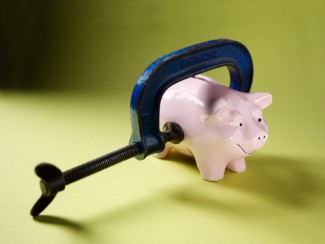As more utilities look at prepay plans, new research finds this option carries both benefits and potential risks. While it may put at risk the wellbeing of some customers trying to save money, it can also lower electricity use and garner customer satisfaction.
The report, by ACEEE and energy nonprofit Slipstream, explores programs that require customers to pay in advance of receiving electricity. The idea is controversial because when a customer’s balance reaches zero, their electricity is shut off until they recharge their account. Traditional plans allow a grace period for payment and permit customers to go into the red before they are eventually disconnected (with plenty of notice), but prepay plans skirt these requirements.
The issues are compounded because customers on prepay plans also tend to have lower incomes and are more likely to let their electricity be shut off to save money. However, in North America, prepay programs also generally come with detailed and frequent real-time feedback that encourages customers to learn about their energy use.
Although these programs are generally not well researched, we found 16 program evaluations in 10 reports that suggest customers reduce their consumption by about 9% when on prepay plans. We complemented this research with stakeholder and expert interviews and reviews of regulatory proceedings. We concluded that prepay programs are likely to reduce energy use, but we aren’t sure why.
None of the evaluations from North American prepay plans used a randomized control design or examined the individual features of the programs. It’s possible that certain aspects of the programs —such as enhanced frequent feedback — may lead to the bulk of savings. So prepay itself may not be a necessary program component to reduce energy use. Based on our research, however, we suspect that feedback with prepay may be more effective than feedback alone.
How prepay plans reduce energy use
Multiple factors work together in prepay programs to influence energy use. The combination of enhanced feedback and a threat of shut-off is particularly likely to reduce energy use. But without further research, we can’t be sure of the impact of each on program savings. Other factors inherent to prepay plans, such as more frequent payments, active decision making for payment, higher costs (for some prepay programs), and paying in advance may also play a role in influencing savings.
If shutoff threats really influence energy reductions, then are prepay programs threatening quality of life? Are some customers putting their well-being at risk by drastically reducing their energy use to save money? These are important questions, because most prepay customers have lower incomes and are more likely to allow an electricity shutoff to save money.
We found that customers on prepay plans tend to have their power shut off more frequently than those on postpay plans. But we also found that prepay customers tend to be happy with their service. These seemingly contradictory conclusions may stem partly from the failure of traditional postpay plans to adequately meet customers’ needs (sometimes shutting customers off for extended periods) and the fact that most prepay plans are currently opt-in (with no surveys of customers who have switched back from prepay to postpay). Nevertheless, it is worthwhile to consider that customers on prepay plans generally like them.
Prepay plans and customer behavior
A few studies have found that prepay customers are typically motivated to learn about their energy use and subsequently ration their consumption. That said, prepay plans generally may not reduce energy burdens for low-income customers (and the plans can be more expensive). Prepay allows for flexibility and encourages control over energy budgets, but this may also put extremely budget-constrained customers at risk. Struggling households may occasionally cut their bills by allowing their electricity credit to run out, and this can pose a risk to their health and safety.
Prepay electricity programs are a normal arrangement in many other regions of the world and are likely to continue to proliferate in North America. But are these programs reducing consumption in a manner that can be considered energy efficiency? Given that the definition of energy efficiency in Minnesota and elsewhere includes a provision that the same level of service is provided with less energy, the jury is still out on this question. Competing issues of energy reductions, reasons for reductions, and consumer protections should continue to be examined in greater detail.
You can learn more about these important topics in the ACEEE/Slipstream report, Examining Potential for Prepay as an Energy Efficiency Program in Minnesota, or the accompanying fact sheet and webinar.


